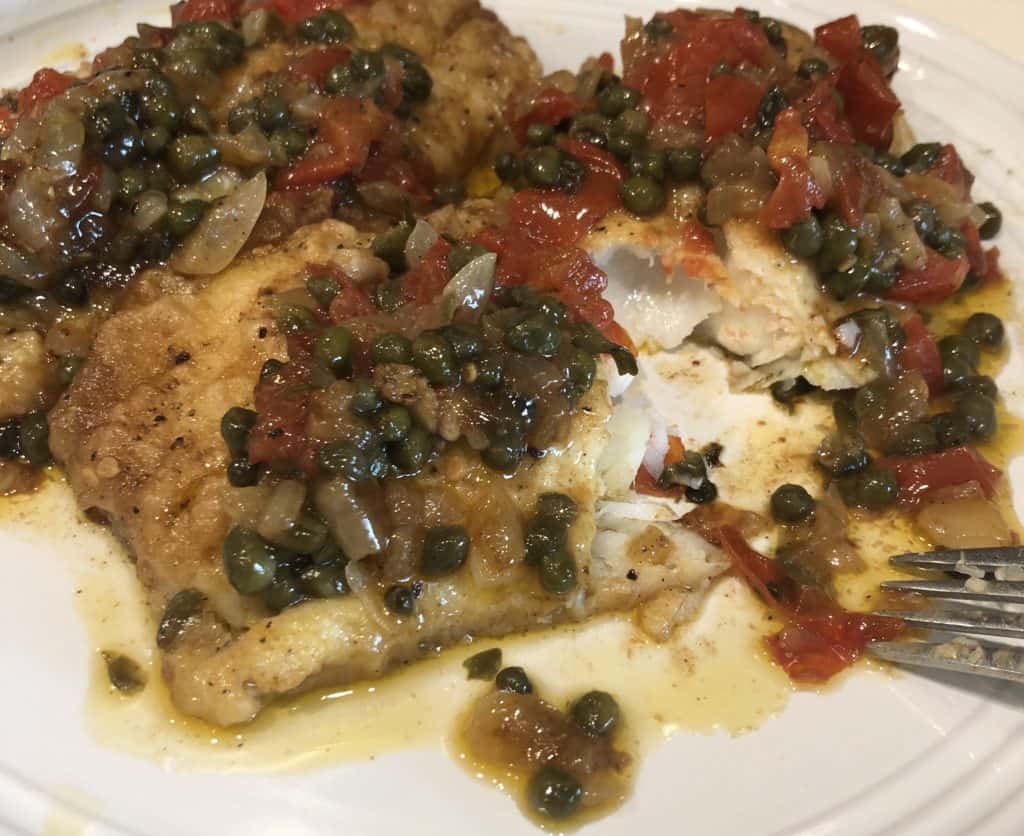Sporting Life

Eating Our Way Out
By David Sikorski
Editor’s note: Dennis Doyle’s Sporting Life column returns next week. This week, we hear from David Sikorski, executive director of the Coastal Conservation Association Maryland, based in Annapolis.
As a lifelong sportsman, native Marylander and someone who is most at home in the kitchen, I often wonder if my love for the Bay and all things that swim in it are more nature, nurture or simply in the air around here.
Like many who enjoy outdoor pursuits, I can trace the hunting and fishing bug in my family tree, but I also recognize the very primal urge to hunt and gather that still exists inside many of us, no matter where or who we came from. I was reminded of this when visiting a dear friend and his family recently, half way across the country. As someone who firmly believes in the “when in Rome” principle, I ate walleye at nearly every meal and we all enjoyed the fresh produce that only summer can provide.
When returning from this small town visit, I was greeted by an overflowing urban garden full of tomatoes and began to think about what protein they should be matched with soon. I closed my eyes and immediately smelled soft crabs, browned in butter in a cast iron pan under the watchful eye of my grandmother more than 30 years ago. However, I’ve been allergic to Maryland’s favorite crustacean for nearly that long, so the memory will have to do—but what a memory it is.
It’s my grandmother’s father was an avid angler who exercised his hunting and gathering acumen every chance he got. My father, who is really the one to thank for my ridiculous outdoor obsession, often tells me stories of cleaning hundreds of white perch caught in the Magothy River and how his grandmother could never quite figure out how to properly cook the venison her husband brought home around the holidays. That grandmother, my great-grandmother, got plenty of other locally grown recipes just right, and I can still picture her sitting at our family table enjoying freshly shucked oysters on her 100th birthday, a choice that is about as Maryland as you can get.
In Maryland, we live in the Land of Pleasant Living, but in my job, I’m often reminded how much things have changed since the good old days. I wonder what the future will say of these times, as our state fish—the rockfish—faces an uncertain future and discussions about a second prohibition of their catch may be on the horizon. We also hear that the crab supply is lower than market demands. Discussing the future of crabs, rockfish and oysters, requires a lot of complex information, different perspectives and a very grey area where facts end and opinions take charge.
Putting that complexity aside, I urge you to think of other options for locally caught or locally purchased seafood that may or may not trigger that same positive reaction that my soft crab memories do. The blue catfish, northern snakehead and flathead catfish surely don’t stand out on any Marylander’s seafood barometer. But, in my not-so-humble opinion, they should.
All three species are deemed invasive by fishery managers and continue to increase in abundance throughout the watershed. Whether here by birth or by migration, these fish originated somewhere else, and have created a debate about what mark they will leave on the Bay. As top predators, all three surely have an appetite that can impact the fragile ecosystems of our local creeks and rivers, but only time will tell what their real impact is long term.
Like most things in fisheries, science and data will help lead our collective knowledge of these fish and no single study or opinion will ever win the day. To support important data collection and act as a platform for education, the Great Chesapeake Invasives Count is underway to harness the power of our fishing community and what they’re seeing on the water. You can help for free by going to ccamd.org/count.
Oh yeah, those tomatoes. They’ll soon be sliced and added to some blue cat piccata I have planned to make. Try it yourself: Get out grandma’s cast iron pan, dredge the catfish filet in a bit of flour, salt and pepper, and brown each side in a blend of butter and olive oil. Place the fish to the side and add butter, lemon juice, capers, some stock (or white wine) and those tomatoes. Stir the sauce and scrape all of the brown bits from the pan. As it comes to a light simmer bring the fish back to the party.
I picked up my blue catfish from Whole Foods for $9.79 a pound, and better yet, I think I know the fisherman who will be feeding his family because of my choice today.
Not one to cook for yourself or catch your dinner? Head to your favorite local restaurant and go for a soft crab if you can, but also ask them to do their part in putting these invasive fish on the menu. After all, if you can’t or won’t provide data, I hope you’ll join me to help eat our way out of this new invasive problem.
David Sikorski is the Executive Director of Coastal Conservation Association (CCA) Maryland, a state-wide chapter of the nation’s largest angling-based membership organization that advocates for the health of our shared coastal resources. Visit ccamd.org to participate in the Great Chesapeake Invasives Count, to become a member of CCA, or to support the organization’s work at an upcoming event.
